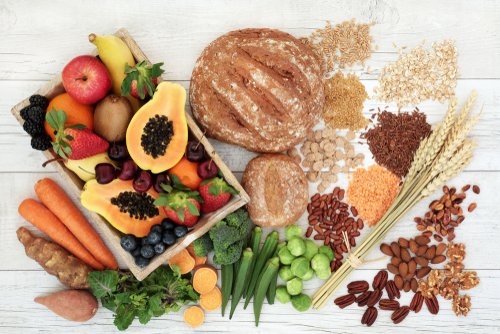
In Looking Good Naked you deliberately do not find any rigid macronutrient specifications.
Because in reality you have a lot more freedom in nutrition than certain nutrition models want you to believe.
Ever since the book was published, I have still received questions from readers and those who stay tuned about which specific macronutrient specifications they should be based on.
Some people like tight guard rails.
And you are wondering how many carbohydrates, fats and proteins you should eat in order to look good naked.
There is no such thing as ONE diet that is perfect for everyone.
Some of us get along fantastically with high fat, low carb. Others ride better on the high-carb, low-fat rails.
If you are wondering which model is potentially best for your body and your goals, just read on.
What are macronutrients?
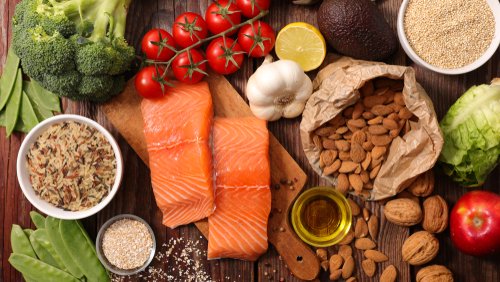
Macronutrients – carbohydrates, fat and protein – are the three main nutrients that your body needs in large (“macro”) quantities every day.
Macronutrients provide your body with energy on the one hand. On the other hand, they are also building materials for maintaining and building up internal organs, muscles, the brain, skin and bones. They also ensure that your body works as intended.
Let’s take a closer look at each of the three macronutrients.
1. Carbohydrates
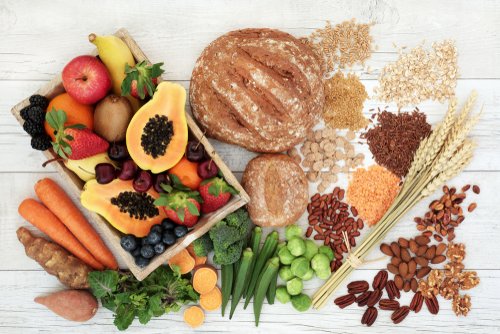
Carbohydrates are one of the two primary sources of energy for the human body (along with fat). They contain sugar, starch and cellulose.
You can find carbohydrates in many healthy foods such as fruits and vegetables, mushrooms and starchy tubers such as (sweet) potatoes and roots, but also in legumes.
On the other hand, carbohydrates are also part of less health-promoting, highly processed foods such as pasta, sweets and ready meals.
Anyone who eats excess sugar and highly processed pasta not only increases their calorie intake, but also increases the risk of many chronic diseases. And also here applies:
The dose makes the poison.
A little sugar now and then is not an issue. Especially not in combination with healthy foods such as Cocoa, as dark chocolate.
Certain foods containing carbohydrates represent a kind of “gray area”:
Whole grain products, legumes and dairy products are well tolerated by most people.
But not from all of them. The latter is relatively easy to find out.
How do you recognize the “best” carbohydrates?

For a long time, nutritionists measured the health of a carbohydrate-containing food using its glycemic index (GI). The GI shows how consuming a source of carbohydrates affects blood sugar levels.
“Avoid foods with a high glycemic index, because they will raise your blood sugar level,” they used to say.
However, recent research suggests that the concept of GI is out of date. Because if you only eat foods with a low glycemic index, you don’t necessarily live healthier.
It is more helpful to differentiate between cellular and acellular carbohydrates.
CELLULAR carbohydrates are plant-based foods such as roots, potatoes and other tubers that store carbohydrates in living cells with cell walls made of fiber.
Since the cell walls remain largely intact during cooking, they have a comparatively low carbohydrate density.
Our “modern” foods mainly consist of AZELLULAR carbohydrates. The intact cells are missing here. Flour and sugar are perfect examples of carbohydrates that have been extracted from plant cells and then processed.
Acellular carbohydrates have a very high carbohydrate density.
And are correspondingly high in calories without really filling you up. They can also have a negative impact on the composition of the intestinal flora and create a microbacterial environment that leads to inflammation, metabolic disorders and chronic diseases. 2
Regardless of which amount of carbohydrate is perfect for you – as much of it as possible should come from cellular carbohydrate sources. Essentially all varieties of fruit and vegetables.
If you have a good digestion of whole grain products and legumes, you can incorporate smaller amounts of them into your diet.
Amount of carbohydrates: What does low-carb and high-carb actually mean?
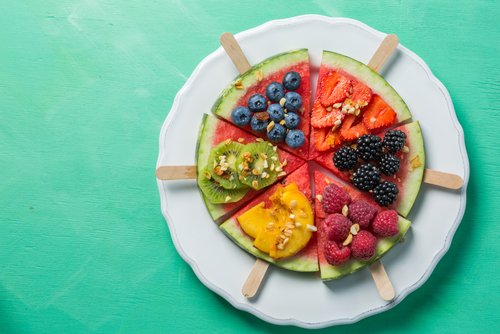
You now know the difference between “healthy” and “less healthy” sources of carbohydrates. Perhaps you are now wondering which daily amount of healthy carbohydrates is ideal for you.
You have probably heard of terms like “low-carb” and “high-carb”. But what does that actually mean?
The daily amount of carbohydrates is usually listed in one of the following four categories:
- Very-Low-Carb (“No-Carb”) – less than 10% of the daily calories : For the average man who eats 2,600 calories a day, that is less than 65 g. Women need an average of 2,000 calories, which is less than 50 g of carbohydrates per day. For people with severe blood sugar problems and neurological diseases, a very-low-carb approach can be useful.
- Low-carb – 10-20% of the daily calories : Our average man is with it 65-130 g a day, our average woman 50-100 g. Those who primarily want to lose fat can often make good progress with a low-carbohydrate diet.
- Moderate carbohydrate intake – 20-35% of the daily calories : At 2,600 kcal per day, that’s 100-228 g, at 2,000 kcal 75-175 g. This level promotes general health and helps to stay slim.
- High-carb – over 35% of the daily calories : Over 200 g per day for our average man and over 150 g a day for our average woman. People with a high metabolic rate, athletes, strength athletes who want to build muscle and pregnant or breastfeeding women usually get along best in this area.
Anyone who has not lived completely offline in recent years will probably have noticed that very low-carb diets such as the ketogenic diet (“keto”) are currently being celebrated in the health scene.
Very-Low-Carb is neither a panacea, nor is it suitable for everyone.
Especially not for every athlete.
Most of my clients make the best progress with one of the last three approaches – depending on their goals and their individual starting point. More on that later.
Do you have to include non-starchy vegetables in your carbohydrate balance?

In my opinion, you ONLY need to count the carbohydrates from starchy vegetables, tubers, roots, fruits, grains, legumes and dairy products.
Non-starchy vegetables do not count.
In other words, if you want to lose weight, you can eat as much broccoli, lettuce and cauliflower as you want. Even if you ride the “no-carb” track.
Non-starchy vegetables do not prevent you from losing weight.
Your body needs a lot of energy to digest these high-fiber, low-calorie foods. Energy that, by the way, he gets from glucose.
The bottom line is that there are very few (if any) carbohydrates left for your body to absorb.
2. Fat
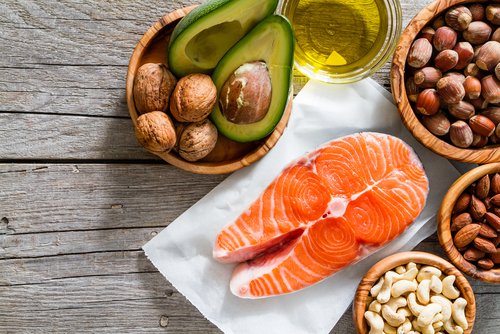
In addition to carbohydrates, fat is the second primary source of energy for your body.
Fats also serve as building materials for healthy skin and hair, a strong immune system and the body’s temperature regulation. They also support the absorption of fat-soluble vitamins.
There are four different types of fats: saturated, monounsaturated, polyunsaturated and trans fats.
Let’s go through them in quick succession.
Saturated fat

Saturated fats are mainly found in milk and meat from ruminants, but also in coconut products such as coconut oil, milk and meat.
Saturated fatty acids such as myristic, palminic, stearic and lauric acids consist exclusively of single bonds.
Saturated fat has been demonized for decades.
It was bad for the heart, they said. On the advice of her doctor, my grandmother replaced butter with margarine and ate few or no eggs.
Fortunately, these theses have been scientifically refuted in recent years.
Today we know that saturated fats neither have a negative effect on blood values nor the risk of cardiovascular diseases. 3
Eggs, butter and coconut oil are rehabilitated. Finally.
Monounsaturated fats
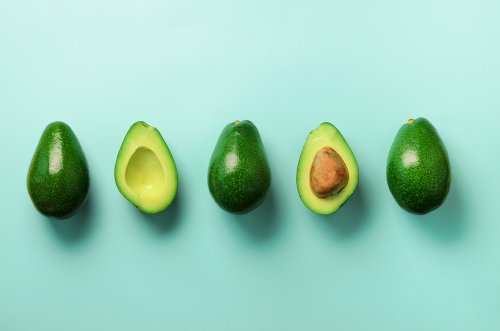
In contrast to saturated fats, the health benefits of monounsaturated fats have long been undisputed.
Monounsaturated fats are liquid at room temperature.
For the chemists among us: It is characteristic that your fatty acids have EXACTLY ONE chemical double bond.
Here are some foods that are high in monounsaturated fats:
- Olives and olive oil
- Avocados
- Macadamia nuts
- Hazelnuts
- Lard
Monounsaturated fats lower the risk of cardiovascular diseases, increase the “good” HDL cholesterol and lower blood lipid levels. 4
Polyunsaturated fats
Polyunsaturated fats have at least TWO double bonds in their fatty acids. They include the two essential fatty acids for humans:
- Linolenic acid (LA), an omega-6 fatty acid
- Alpha-linolenic acid (ALA), an omega-3 fatty acid
Made from ALA Your body can produce EPA and DHA, the two omega-3 fatty acids that are essential for your health and fitness.
However, it generally makes sense to regularly eat fish and seafood that are high in EPA and DHA.
Because unfortunately the body’s own conversion process does not work particularly efficiently in most people.
Even if omega-6 fats are often branded as unhealthy, this is generally not true at all.
Omega-6 fats are very healthy if you get them from fresh, wholesome foods such as avocados, nuts, seeds and poultry and also get omega-3s from fish.
Omega-6 fats from industrially processed oils are problematic.
They have been damaged in the manufacturing process, become rancid and promote inflammation in the body. Uncool.
As long as you stay away from industrially produced vegetable oils, you can enjoy your avocados and almonds just like the skin of the chicken.
trans fats
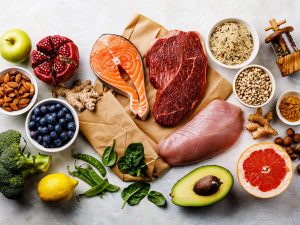
The term trans fats includes both industrially manufactured and natural trans fats.
You should stay away from industrial trans fats. They are harmful.
They increase the risk of heart disease, cancer, diabetes and neurodegenerative diseases.
But natural trans fats are healthy.
CLA stands for conjugated linolenic acid. It is found in meat and milk from grazing animals and is one of the most researched natural trans fats. CLA protects against inflammation, diabetes, cancer and cardiovascular diseases.
CLA is also available as a dietary supplement. But the synthetically produced variant does not have the same advantages as natural CLA. Paradoxically, it promotes insulin resistance and oxidative stress.
How do these opposites come about? It may have something to do with the different CLA mixture and the amount and duration of intake.
3. Egg white
 2
2As an energy source, protein is the worst imaginable of all three macronutrients. Converting it to glucose (or fat) simply loses too many calories.
Protein is the most important building material for your body.
Amino acids, the constituents of protein, play a crucial role in many biological processes.
They are – among other things – building blocks for hormones and enzymes, for the repair and building of muscles, skin, immune cells and bones.
The question of how much of it you need is not purely quantitative. The answer to that also depends on the quality of your protein sources.
Complete vs. incomplete proteins
Foods that make up complete protein contain all nine essential amino acids. You must eat them all in sufficient quantities so that your body can maintain its normal functions.
Complete sources of protein include meat, poultry, fish, eggs, and dairy products.
Soybeans and quinoa are often considered complete vegan proteins. However, they have a few catches you should be aware of.
First, they are less bioavailable, i.e. Your body cannot utilize them quite as well. Second, they contain so-called “anti-nutrients” that can hinder the absorption of other nutrients. I’ll go into that again in a moment.
Incomplete protein sources are missing at least one of the nine amino acids that you need.
Grains and legumes, for example, are incomplete proteins. But if you eat them together, you get the full spectrum of amino acids your body needs.
However, they are less bioavailable and contain more anti-nutrients than meat, eggs, seafood and dairy products.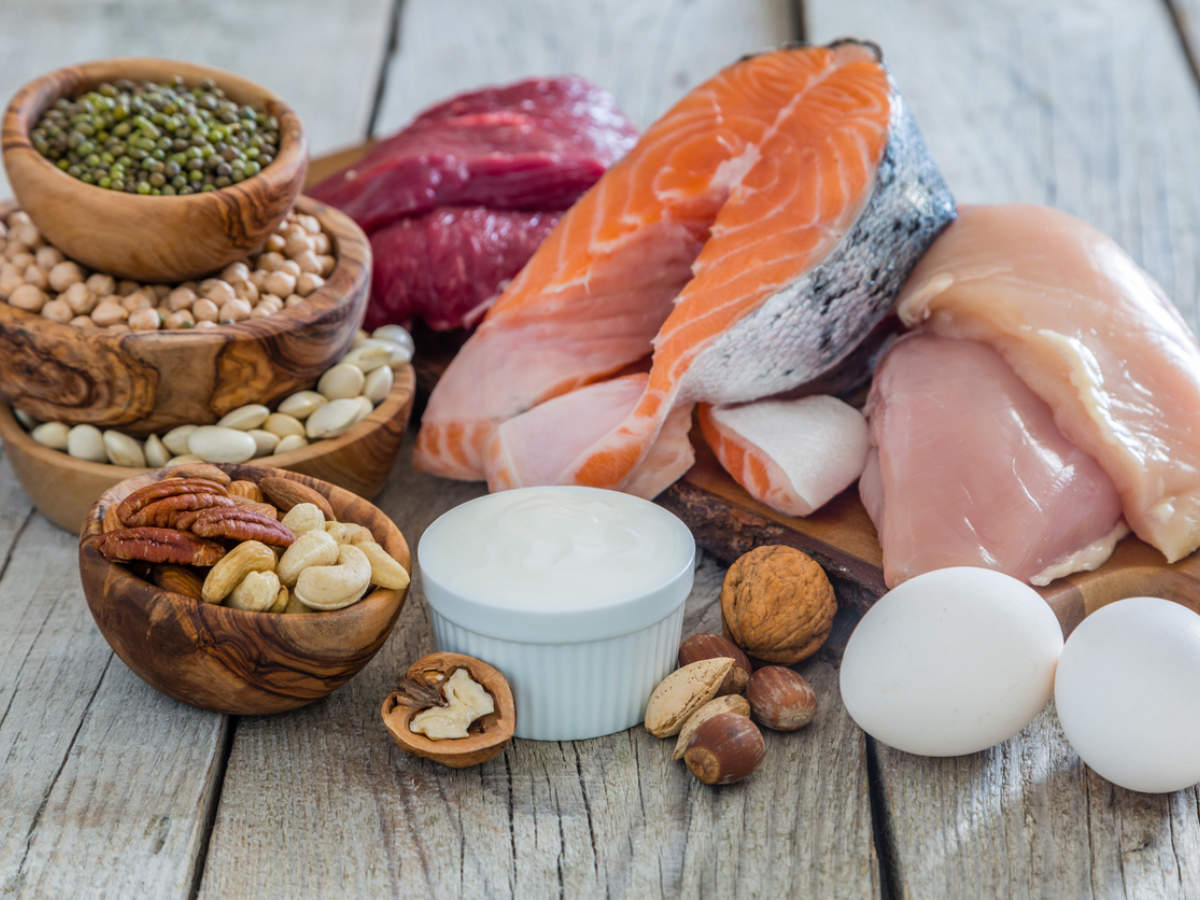
How much PDCAAS does your protein have?
The PDCAAS value is a measure defined by the WHO for the bioavailability of protein that combines two parameters:
- How close is the amino acid profile of a food to what your body needs?
- What proportion of it can your body actually use?
PDCAAS says Incidentally, for “Protein Digestibility-Corrected Amino Acid Score”. The German term “amino acid index” is a little easier on the tongue.
Animal protein sources usually have significantly higher PDCAAS values and are therefore more bioavailable than vegetable proteins. The following table shows you examples of different protein sources. 7 8 9 10 11
Note: I am often asked which protein powder I would buy. Therefore I have linked the respective products in the table above.
How much protein do you need?
Those who neither want to lose fat, build muscle and do not do sport are usually well supplied with 20 percent of the daily calories in the form of protein.
To build muscle or lose fat, you should increase your protein intake to 30-40 percent of your calories.
Fear of a protein deficiency that is hazardous to health is unfounded, by the way. The mechanism responsible for this in your brain is also called the “protein lever effect”:
You stay hungry until you have eaten enough protein to keep your body functioning properly.
If you want to lose fat, however, you should specifically eat a little more of it. This is also recommended for muscle building.
Read more: More on this in my article on high protein nutrition.
Macronutrient recommendations for various fitness goals
Before you can calculate your macronutrients, you should decide on a general direction.
Is your general health most important to you, do you also want to lose weight or gain muscle? Or do you train for performance for a certain sport?
If you are pregnant (or want to become), the situation is different again …
1. General health
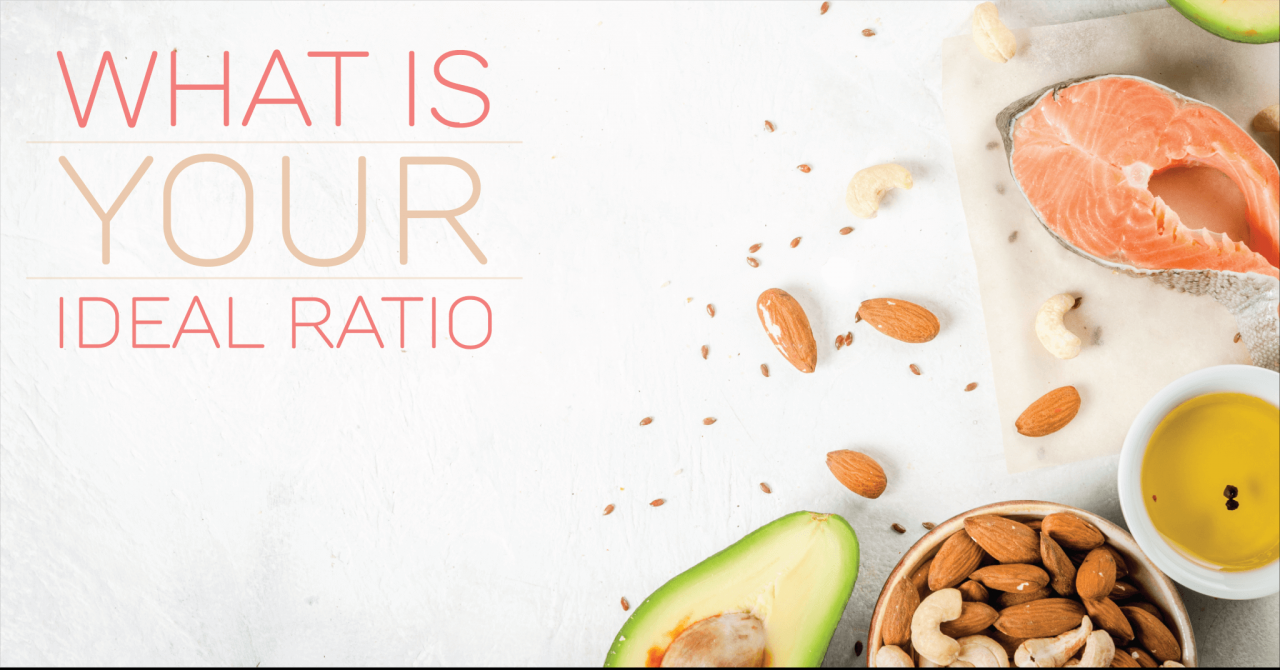
If you are primarily concerned with staying healthy and you are not pursuing any aesthetic, athletic or performance goals, I recommend the following macronutrient distribution:
- 20 percent of the calories from protein
- 15-30 percent of the calories from carbohydrates
- 50-65 percent of the calories from fat
Compared to the official DGE recommendations, this is a low-carbohydrate diet.
But in relation to the traditional diet of the Stone Age man, it is moderate and perfectly suited to provide you with everything you need to stay healthy.
2. Fat loss
A protein-rich diet will help you lose weight in two ways:
- Your body releases more signaling substances that make you feel full. This makes it easier for you to eat fewer calories.
- You are giving your body one less reason to lose precious muscles. This helps you to keep your daily calorie consumption as high as possible and to avoid the yo-yo effect.
If you want to lose fat, you should aim for around 30-40 percent of your daily calories from protein. 12 13 14 15
You can experiment with the amount of protein.
This is how you can find out how much of it will keep you full and satisfied while you are losing fat.
Reducing the carbon hydride rate often helps considerably when losing weight.
Not always, however. If you train hard and a lot or have a lot of stress in general, MORE carbohydrates could make it easier for you to lose weight. This could also make things easier for women.
Even a fat loss plateau can sometimes be broken by increasing the proportion of healthy carbohydrate sources (and therefore lowering the fat intake).
If you go the low-carb route, you should still include some carbohydrate sources such as potatoes, sweet potatoes or fruit – ideally after training.
3. Muscle building

Protein is critically important for all athletes. A protein-rich diet stimulates mTOR, an enzyme that stimulates muscle building and muscle regeneration.
30 percent of your daily calories from protein should be enough.
Since you eat more calories in muscle building than in fat loss, the absolute amount of protein should then roughly correspond to the amount you consume when losing weight.
And the “carbs”?
The ideal amount of carbohydrates for athletes is controversial.
The International Olympic Committee recommends strength athletes 4-7 g of carbohydrates per kg of body weight per day. 16 For a man weighing 80 kg, that would be an impressive 320-560 g of carbohydrates per day – depending on the calorie requirement, 50-70% only from carbohydrates.
So it is hardly surprising that amateur athletes could risk type 2 diabetes. 17
On the other hand, one hears – now also in weight training – anecdotal reports from athletes who eat low- or very-low-carb and build muscles. Studies do not confirm this. 18
In strength training, your body relies primarily on glucose for energy supply. If there isn’t enough glycogen available in the muscle, exercise intensity suffers. And it can be difficult to set the necessary training stimulus to build up.
When building muscle, I recommend a carbohydrate intake of around 35% of the daily calories.
In this way, you get enough glucose to replenish your empty muscle stores without risking prediabetes.
4. Athletic performance
If you primarily want to achieve a certain sporting performance – whether in endurance sports or in another discipline – you don’t need quite as much protein as in muscle building:
You should be adequately supplied with 20-30 percent of your daily calories from protein.
I recommend the same intake of carbohydrates as for muscle building:
About 30-35% of your daily calorie requirement should come from carbohydrates.
If you do a sport that requires a lot of explosive movements – for example martial arts, soccer, tennis or sprinting – you should orientate yourself more towards the higher range.
The “Train Low, Compete High” approach is popular in endurance sports: You train with depleted carbohydrate stores, but go to the competition “loaded”.
This model, too, can best be realized with a moderate carbohydrate intake. Namely, by doing your units “sober” and only then topping up the glycogen stores. 19 20
5. Pregnancy
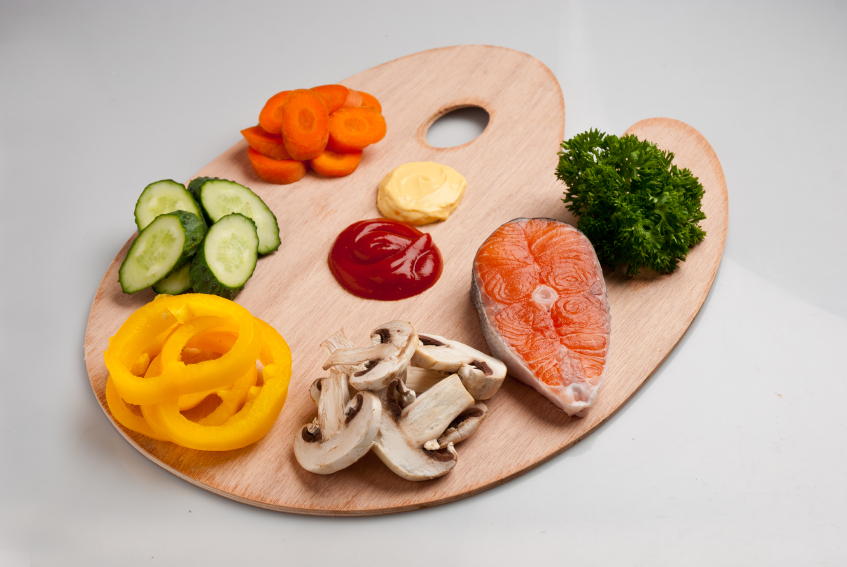
At first glance, that’s not necessarily a fitness goal. On the other hand, I keep getting questions from those who stay tuned.
You shouldn’t skimp on carbohydrates during pregnancy.
The fetus needs glucose so that its brain can develop optimally. Carbohydrates provide glucose.
Even when breastfeeding, low-carb is not necessarily a good idea.
Too few carbohydrates could slow down the child’s growth. 21
The child has priority during pregnancy and breastfeeding.
15-20% protein is ideal, and the amount of carbohydrates should make up at least 30% of the daily calories. 22 23
Note: This is not medical advice. In case of doubt, the doctor you trust and who will look after you during the pregnancy has the last word.
Calculate macronutrients: a 3-step process
In most cases, the following strategy works best to calculate the ideal macronutrients for you.
1. Start with egg whites
Take the protein intake recommendation that best suits your goals:
- 20% of the daily calories for general health
- 30-40% of the daily calories for weight loss
- 30% of the daily calories for muscle building
- 20- 30% of the daily calories for athletic performance
- 20% of the daily calories during pregnancy
As soon as you have made a decision, you convert the percentage into a decimal number (30% becomes for example to 0.3).
Then you determine your daily amount of calories from protein by multiplying the decimal number by your daily calorie requirement. (If you don’t know it, you can estimate it here with my calorie calculator.)
You divide the result by four (1 g protein provides 4 kcal) and – voilá – you get the daily amount of protein in grams.
Example: You want to build muscles (30%). Let’s assume your daily requirement is 2,600 kcal. 2,600 kcal x 0.3 = 780 kcal from protein. You divide that by 4 to get the daily amount of protein – in this example it’s 195 g.
2. Determine the amount of carbohydrates
Choose the right carbohydrate level for you based on your goals:
-
- Low is 10-20% of the daily calorie intake
- Moderate is 20-35% of the daily calorie intake
High are over 35% of the daily calorie intake
As soon as you have made a decision, the rest of the calculation is the same.
One gram of carbohydrates provides you – just like protein – 4 kcal.
Example: Muscle building (35% carbohydrates) and a daily requirement of 2,600 kcal. 2,600 kcal x 0.35 = 910 kcal from carbohydrates. To get the carbohydrates per day in grams, you divide the result by 4 – in this example it is 228 g (910 ÷ 4 = 227.5).
3. Bold fills the gap
As soon as you know your ideal carbohydrate and protein intake, you fill the remaining gap with fat.
One gram of fat contains 9 kcal.
Example: Build muscle again (35% carbohydrates, 30% protein → 35% remain fat). We also continue to assume the daily requirement at 2,600 kcal. 2,600 kcal x 0.35 = 910 kcal from fat. You divide that by 9 to get the fat in grams – in this example it’s 101 g (910 ÷ 9 = 101.1).

Tip: Use a nutrition app
Once you have calculated your macronutrients, you can track them with a nutrition app like Yazio or CaloryGuard Pro.
Such an app is of course not a “must”. But it does a lot of work for you in tracking your diet and visualizes how much you are consuming of each macronutrient.
If you want to achieve your goals, you need a suitable feedback system. A food diary gives you this feedback about your meals.
Conclusion
Now you basically know everything you need to know about calculating macronutrients.
You have learned about the three macronutrients and their role in achieving your fitness goals. One of the key messages of this article is: There is no such thing as ONE optimal macronutrient distribution.
The recommendations above are not set in stone either. They are recommendations that have proven themselves in practice. It’s a good idea to try your own experiments.
Also, you DON’T HAVE to calculate your macronutrients to look good naked. If you like it uncomplicated, just orient yourself on the “Looking Good Naked Teller” model from my second book.
Now it’s your turn.

